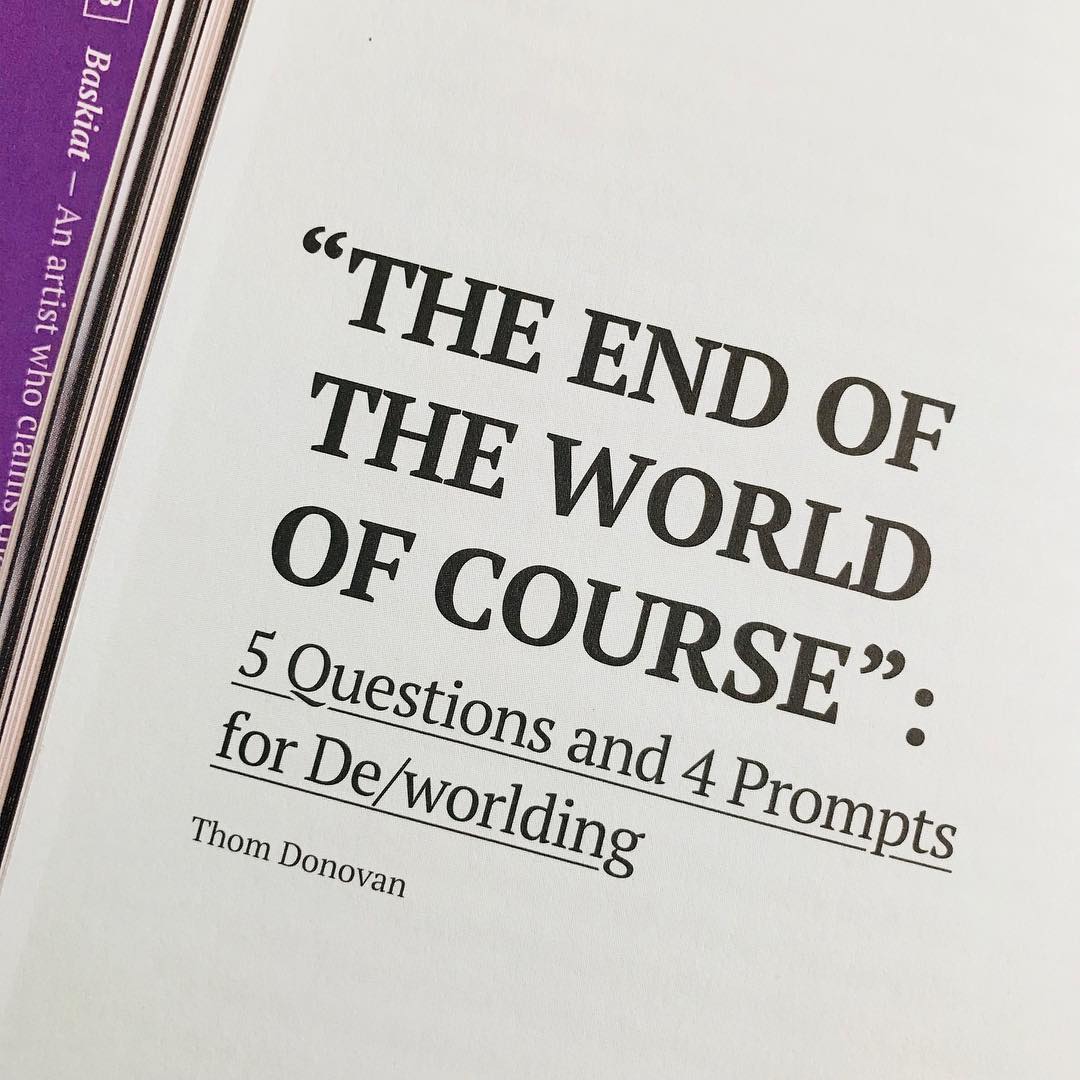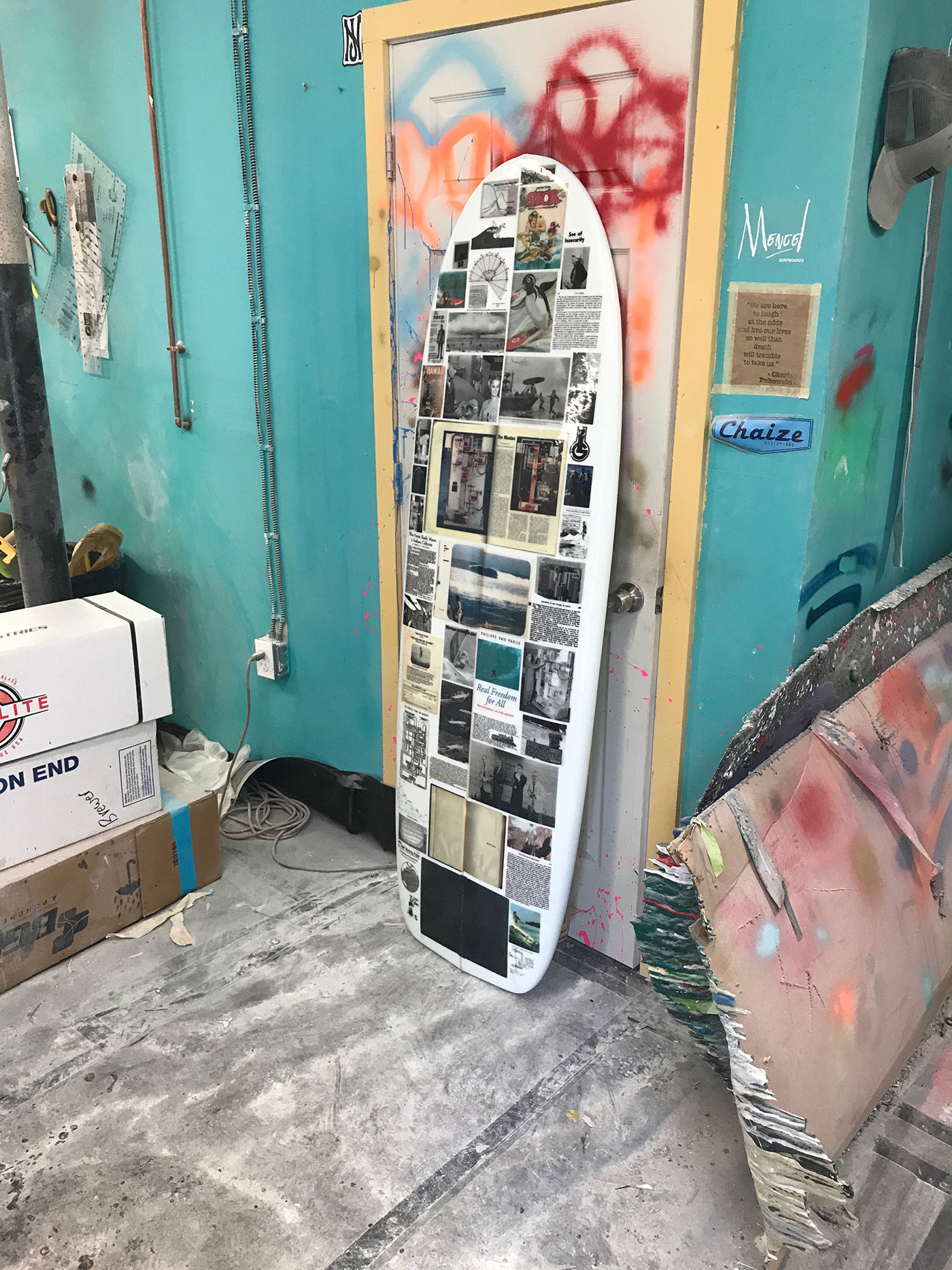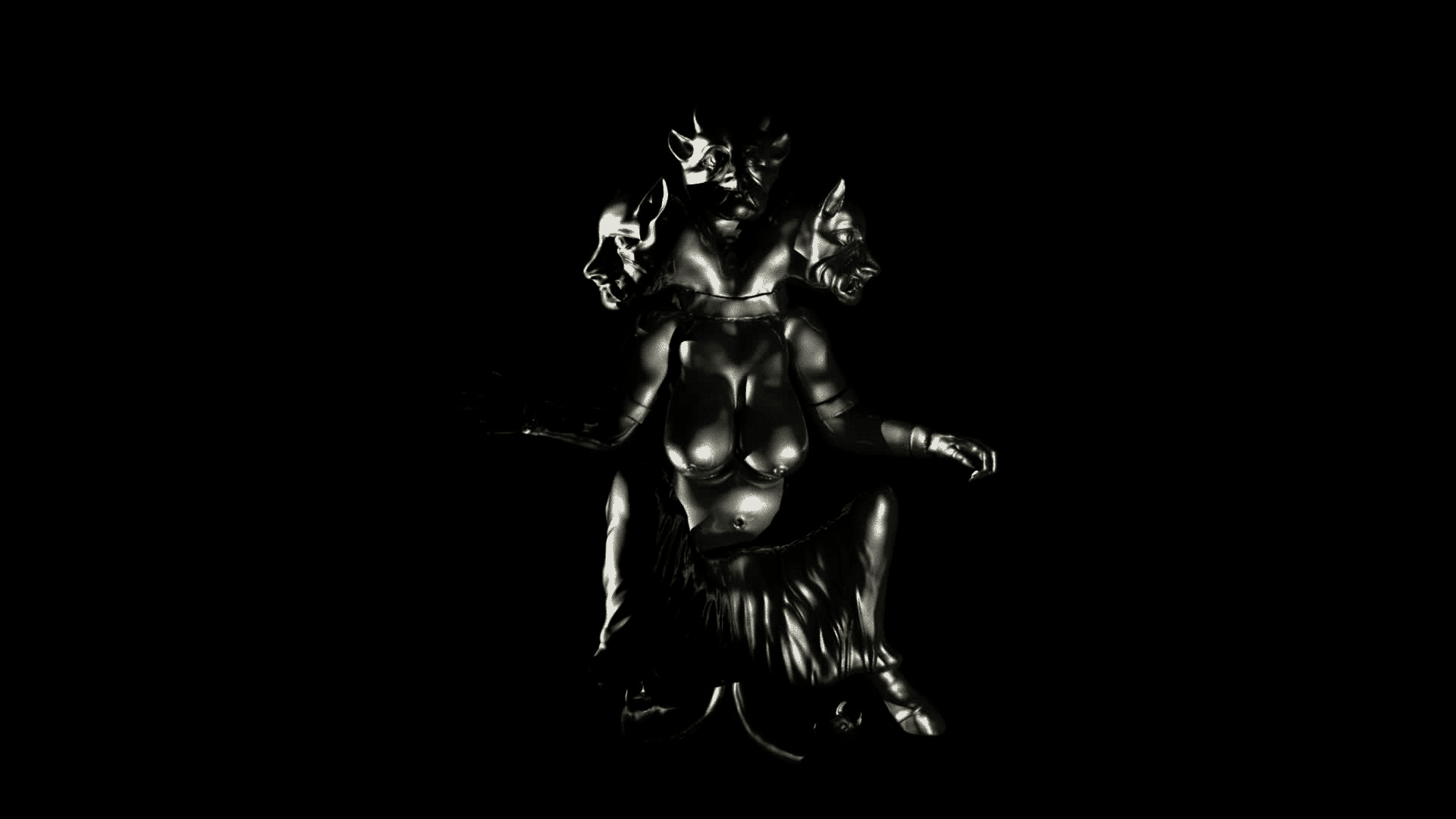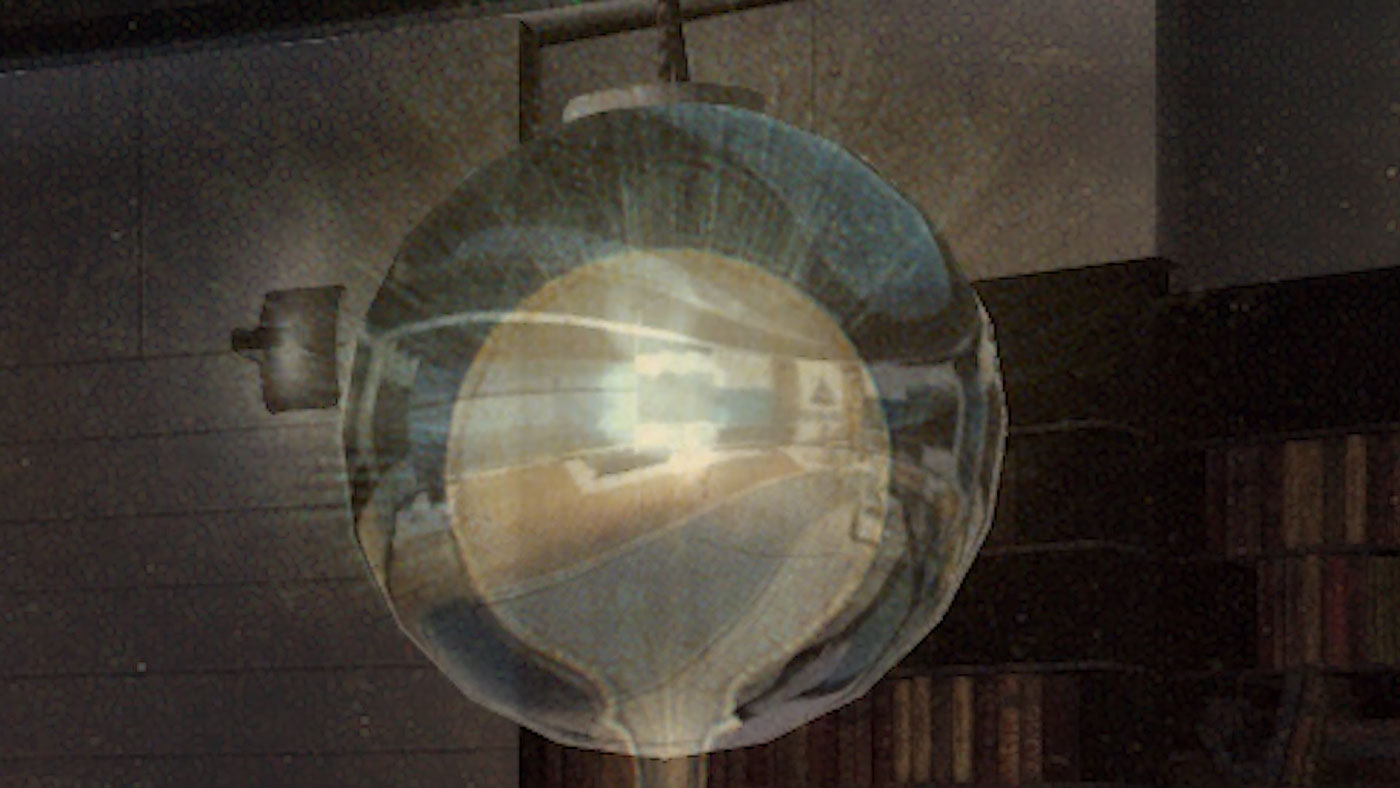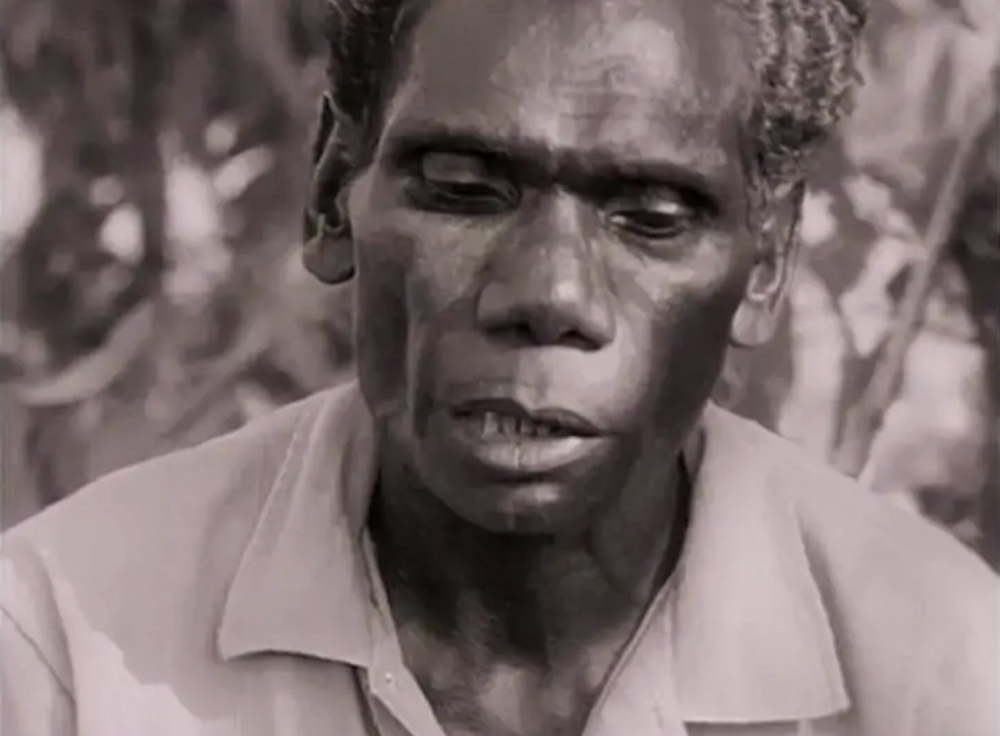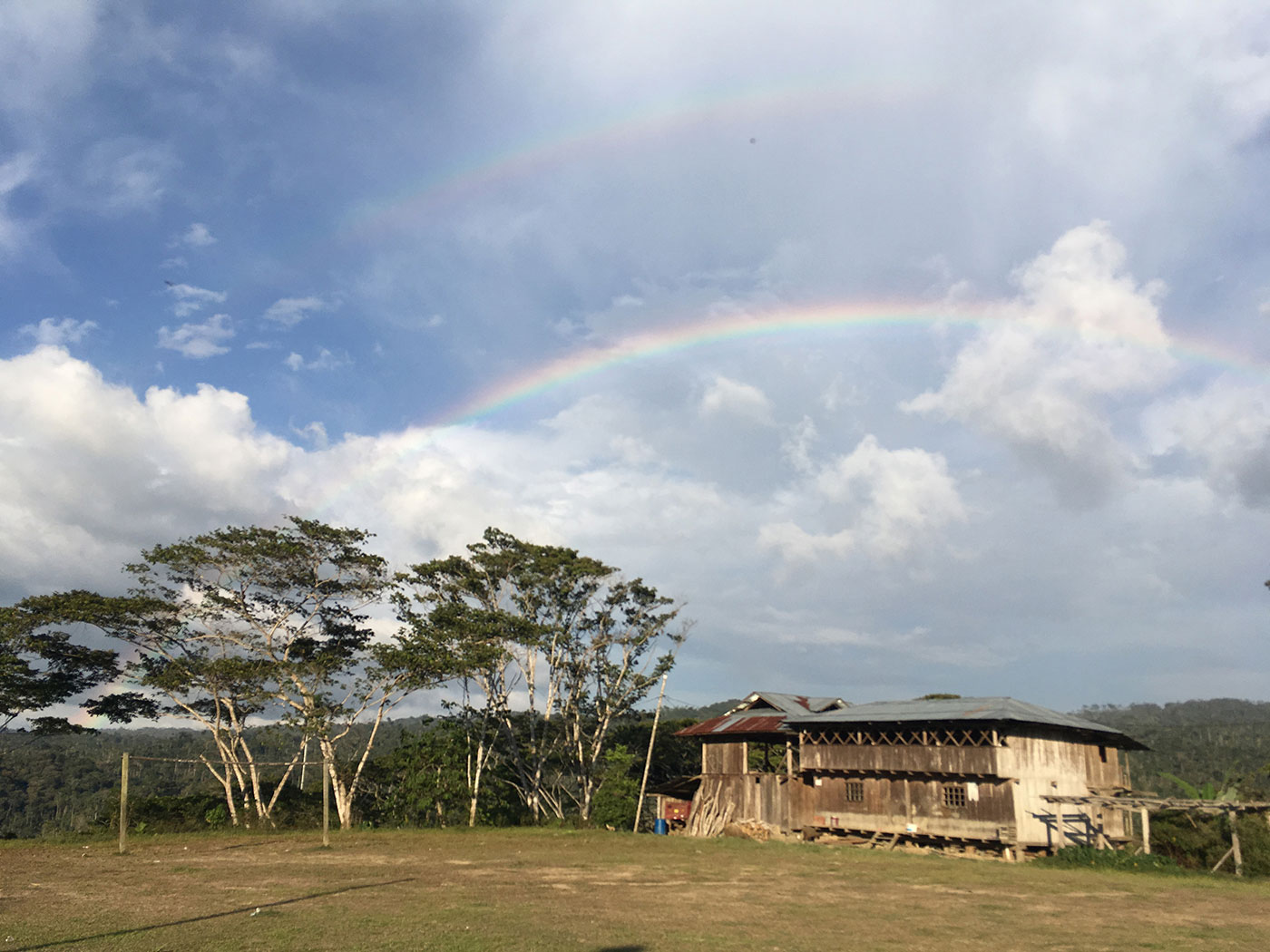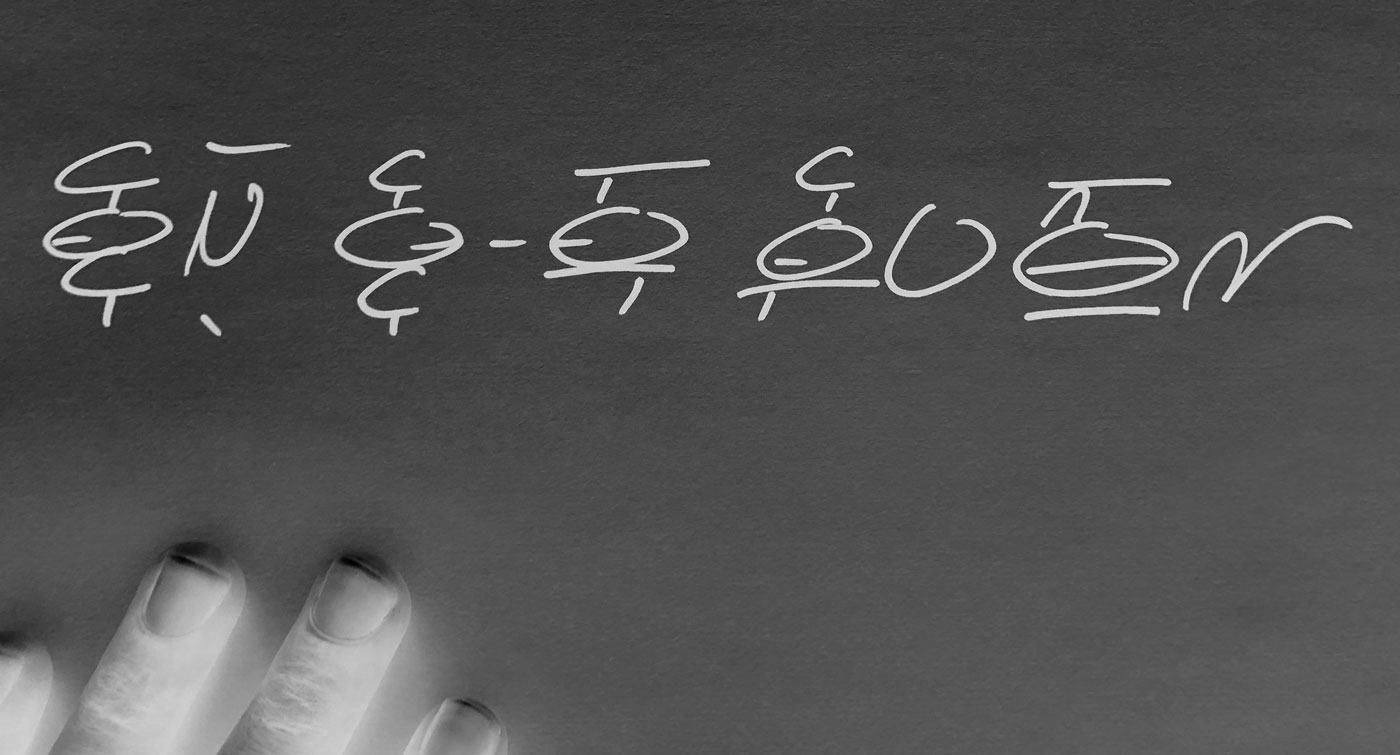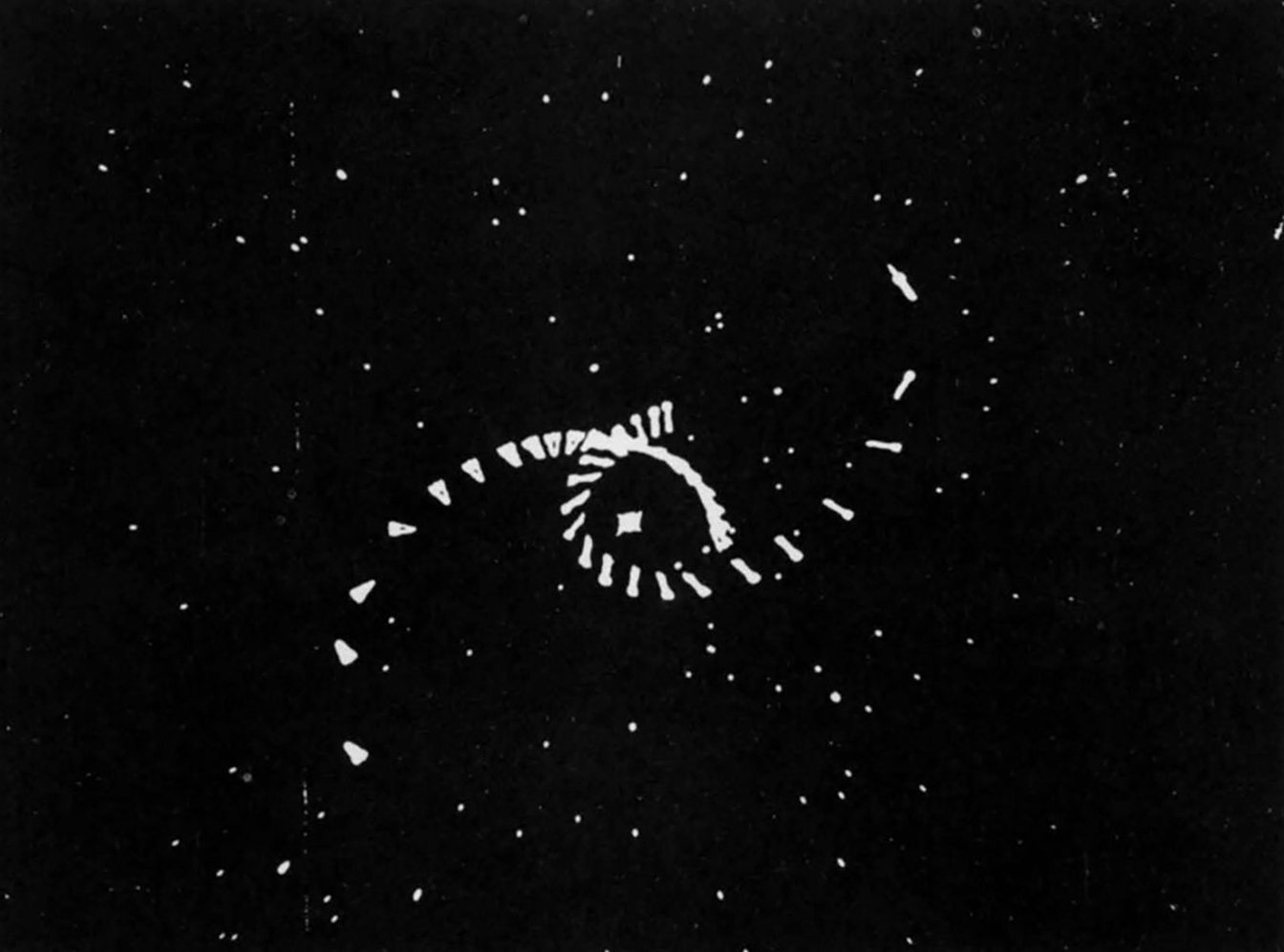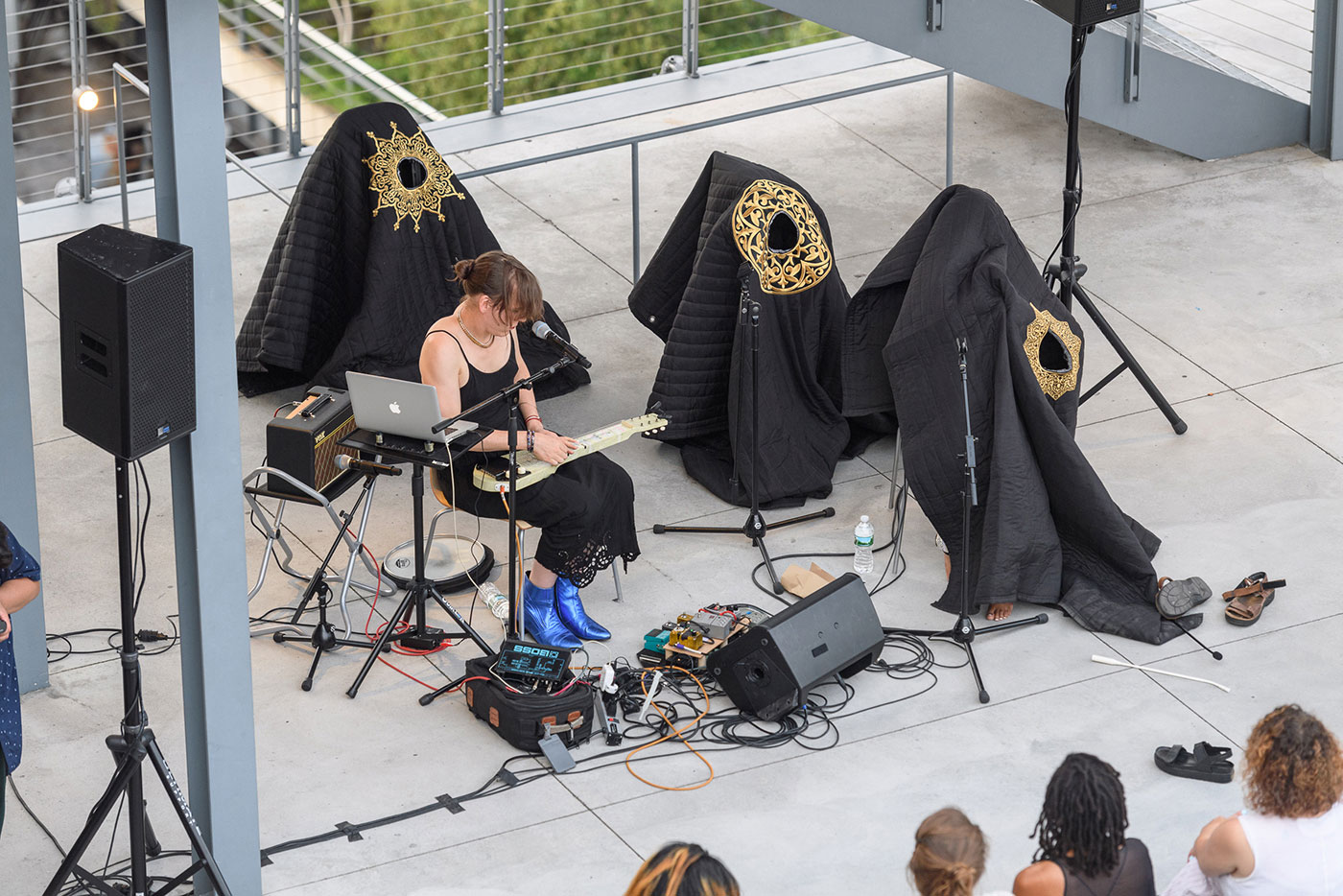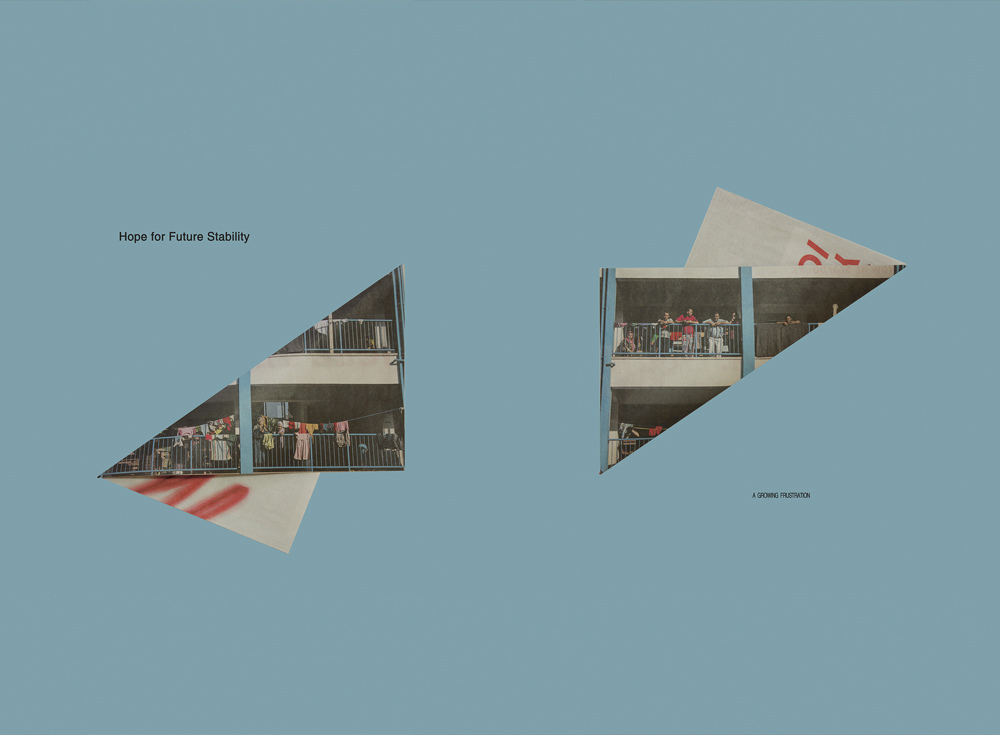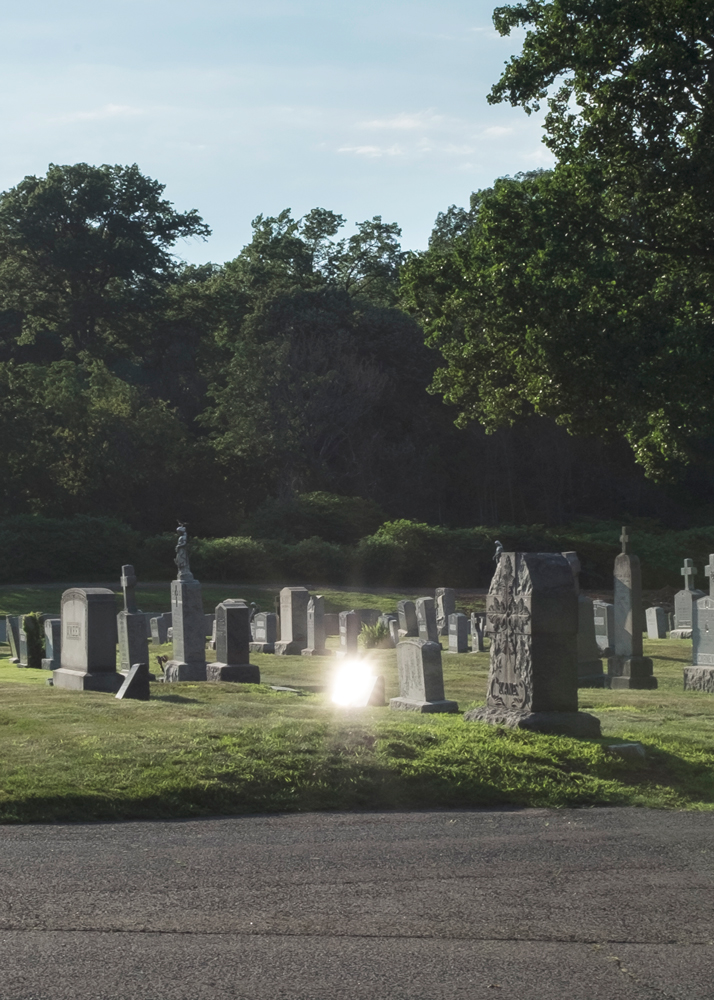This Churning Earth
Listening at the End of the World
Thea Ballard
I know it’s gonna be a strange time
Well it can’t possibly be any stranger
Than the present
‘Cause now it is said there’s a change
And I sense the change in me
—Dear Nora, “The Lonesome Border Pt. 2”

It was only an average of two degrees warmer than usual in New York last October and November, but with all of the political catastrophe bubbling over I fixated on the ways the already-breaking ecosystems of which I am a part were about to accelerate in their dissolution. Music often starts as a balm for me and, seeking comfort, I guess, I became obsessed with Dear Nora’s 2004 album Mountain Rock, a record written in the height of the Bush years by the Portland-based indie-pop musician Katy Davidson from her childhood home in rural Arizona. I was attracted to its cover, a yellowed image of a mountain ridge foregrounded by a slope of scrubby coniferous trees. Coupled with its pared-down, casual acoustic pop, this bucolic aesthetic seemed to promise some proximity to nature, which might in turn be reassuring. I wanted to be reminded of growing up in the middle of nowhere in Vermont, where I often dealt with my problems by listening to folk music and walking in the woods; I wanted to be reminded of the time-space of places that weren’t ruled by humans and their toxic infrastructures.
But it goes without saying that such places don’t really exist anymore. Maybe it was my own irreversibly dark mood, but rather than serving as the regulating affect-management tool I sought, listening to this album all the time (especially on the subway to and from work) began to unfurl something a little murkier. Even if it charts an escape, in Mountain Rock, worlds are ending. A twentysomething Davidson heads into the mountains to seek solidity as her relationships shift and expire, but several points throughout the album suggest a turn by which she winds up seeking solidity in those relationships in face of the lack of solidity the mountains actually have to offer. The instability to which Davidson responds is a mix of the political, environmental, and existential sort, possessing a mutable temporality that draws it beyond being solely event-based. Ostensibly bounded events—an election, a natural disaster—make visible broader and shifting undercurrents of catastrophe. On “People Don’t You Know,” Davidson considers the limits of the Colorado River and West Coast water systems, her voice doubled and tinny over a single acoustic guitar: “And won’t it be weird when the dust storms appear/And all life is obliterated?” This comes right after a song in which she and “Ryan and Jane, blue star, and green thing” take a hike through the Catalina Mountains: we go on living in these sites, knowing full well they’re vulnerable or doomed.
A sensitivity to the ecological can be located in post-industrial Western pop traditions through a recurring emphasis on the pastoral. I think of an arc of well-intentioned (and predominantly white) musicians, from Woody Guthrie to Joni Mitchell’s preservationist lament about paving paradise to put up a parking lot, and the yearning for nature lodged in more contemporary indie-psychedelia like Animal Collective. But what happens when our aesthetic relationship to our environs becomes irrevocably bent? What might ecological music be in this destructive moment?
For one, though an album like Mountain Rock might effectively evoke a specific wooded location, it seems important to establish that such music needn’t emphasize a place or a narrative to function as ecological. In Hyperobjects, Timothy Morton posits the band My Bloody Valentine as an example of ecological music, describing them alongside his notion of the hyperobject—a term for things that are ungraspable, but that route and overwhelm us all the same. Global warming is a cornerstone example, but Morton occasionally uses encounters with art to exemplify the almost-psychedelic nature of interacting with a hyperobject. He gives a lurid account of listening to the band’s dense, luminous shoegaze: “Distortion pulps and fragments the sound into a welter of gravel and thick oil. Yet try as I might, I can’t tear my ears away… I think that this music could liquefy my internal organs, make my ears bleed (this has actually occurred), send me into seizures. Perhaps it could kill me.” Morton’s intense experience of the band hinges more on their music’s abstract-affective punch, as well as its spatiality, which connects to the listener’s body in a way that, per his description, threatens to turn violent.
Considering abstraction as a tool in this realm of ecological music, I’m reminded of the Wave Notation series of albums put out by the late Japanese musician Satoshi Ashikawa in the early 1980s. These consisted of releases falling under the umbrella of “environmental music” by Hiroshi Yoshimura, Satsuki Shibano (playing Erik Satie), and Ashikawa himself. In the liner notes for 1982’s Still Way, he elaborates: “Not being music which excites or leads the listener into another world, it should drift like smoke and become part of the environment surrounding the listener’s activity. In other words, it is music which creates an intimate relationship with people in everyday life.” Ashikawa proposes this in light of an oversaturated contemporary soundscape, an “audio ecosystem” which “is beginning to fall apart.” He notes, citing sound environmentalist Murray Schafer, the specific vulnerability of hearing as a sense: one can close one’s eyes, but not one’s ears. The approach he posits acts as a reparative in this disintegrating ecosystem. Particularly in louder, less manageable urban spaces, we carry music around with us and use it as a buffer, maybe even a transitional object. In a sense, this opens up possibility for songs to cultivate everyday intimacy with the listener, and it’s for this reason that I want to leave room to consider more banal music alongside the formally experimental examples one might be quicker to imbue with critical power.
Emphasizing “sound design” over a more obtrusive ornamental approach, Ashikawa’s environmental music seems to exist on the reverse end of the spectrum from My Bloody Valentine as described by Morton: the former purposeful and reparative, the latter something like a radioactive byproduct that’s both stunning and powerful. But in Ashikawa’s request for lived-in intimacy and presentness in the world in which one already exists, music also performs a similar function, cultivating in listeners an awareness of the ways in which the body can be both constituted and destroyed through sound.
That destruction might here be the more interesting process. New music, attached as it is to the reverence of performance and the affection of community, seems of late to be constantly charged with world-building, whether it does so through glimmering futurisms or ad hoc repurposings of the refuse of life under late capitalism. Perhaps it makes sense to relinquish the impulse for optimism and consider how sound can do the opposite: chart or even enact a world-destroying.
In her essay “Life and Death in the Anthropocene,” Heather Davis draws from Elizabeth Povinelli’s recent work in distinguishing between the frameworks of finitude and extinguishment as responses to human-wrought climate devastation: “Finitude represents the drama of existence played out in relationship to the teleological orientation of time towards our end,” she writes, considering how such a logic, applied to anthropocenic apocalypse scenarios, absolves us of responsibility. Extinguishment, meanwhile, “recognizes that things live and die, re-composing in a different form,” restructuring the very notion of an end. The pessimism embedded in apocalypse narratives is certainly present in many sound projects. Still, I’d argue that world-destroying in ecological music would act in such a way that it takes the more specific form of extinguishment.
Keeping in mind issues of intimacy and scale, the worlds in question could be relatively small. The songwriter Phil Elverum, who is based in the seaside town of Anacortes in Northeast Washington State and who has recorded as the Microphones and, most recently, Mount Eerie, has long folded his environs into his music. Moving between rough, cascading black-metal-influenced textures and austere folk styles, his music can emulate the rush of the ocean or the odd stillness of a moonlit forest; it also harnesses the tension of entering such places as a potentially destructive human presence. His most recent record, this year’s A Crow Looked At Me, was about the death of his wife, Genevieve Castree, which he speaks about in painfully literal terms: voice and guitar, lyrics that seemingly compulsively chart the time leading up to and immediately proceeding a devastating loss. Pared-down as it sounds, it’s expansive in its emotional reach, and also insofar as it contains more deaths than just Genevieve’s. The scenes Elverum constructs and to which he clings, whether interiors of the house where she passed or places in nature he travels to with their young daughter, seem to cruelly transform into the next thing faster than he’s ready for them to. Trash, clothing, and bloody tissues are discarded. Describing a camping trip in a location “surrounded by growth… layers of moss and life,” he watches as “the ground absorbs and remakes whatever falls.” The song “Forest Fire” takes place amid wildfires of the sort currently consuming the Pacific Northwest, “…cleansing devastation burning the understory, erasing trails.” The uncertainty that accompanies a constant, unrelenting passage undermines the solidity of Elverum’s performance: nothing stays still, and really, nothing stays.
Davis, introducing the framework of extinguishment, insists that “we must learn to enter into an untenable world, instead of operating from the fantasy that it can be barricaded against.” Narrative strategies that weave, however uncomfortably, the specifically human into broader landscapes put us in confrontation with this; indeed, perhaps the brutal intimacy that accompanies the death of a loved one is necessary in comprehending the death of a landscape or ecology. Through repetition—using gentle, genuinely unobtrusive musicianship and drone-like formal monotony—Elverum sustains our contact with something that’s usually treated as an event, buried and contained in its drama.
Ironically, one observation I would make about this record is that for all its mainstream indie-rock appeal, it’s actually quite difficult to carry with you. Musically, it’s thinly built and easy to drown out; conversely, its thematics threaten to overwhelm, and because I’m fearful of allowing its themes to seep into my everyday, I rarely choose to listen to it. Ashikawa’s environmental music sought to insist upon or cultivate a curative form of listening; an ecological listening would be a break with habits—even painful. Citing a lecture by Fred Moten, Davis offers exhaustion as a mode through which we experience extinguishment: “Exhaustion is the understanding of the cyclical movement and transformation of life through death. Exhaustion is the way in which different beings come into the world and pass through it, transforming into something else.” Perhaps there are ways to allow or enable the exhausted listener: to make music something into which we can collapse, rather than something that empowers or redeems us.
And we needn’t limit experiences of loss and exhaustion to mourning; there is also, as Davis points out, the process of re-composition, which aligns well with forms of dark futurism. Elysia Crampton’s 2016 performance-opera Dissolution of the Sovereign: A Time Slide into the Future (Or: A Non-Abled Offender’s Exercise in Jurisprudence) is an abolitionist opus of sorts for the artist, whose clubbier compositions in 2015’s American Drift and 2016’s Demon City garnered critical praise. I would argue that Crampton’s work has always embraced an ecological sensibility, containing traces of place while struggling with how power is spatialized and embedded in the land. American Drift dug into the geology of her onetime home of rural Virginia, and songs like the single “Lake” buzz, literally, with the lush sound of crickets at night.

Re-composition is a beautiful term for what Crampton—a collagist who draws from points of reference including experimental traditions, pop, history, and critical theory—does with sound. At points in Dissolution of the Sovereign (which I discuss here drawing from a recorded version available to stream on Soundcloud, though Crampton also performs it as an audio-visual set) layers of samples and instrumentation agitate and transform in almost violent ways. Recognizable lines—say, a sample from Eve’s 2001 single “Let Me Blow Ya Mind”—become sediment pressed and reformed by the pressure of other matter. Re-composition is also built into the piece’s sprawling narrative (performed as spoken word by Crampton in live versions), which begins with the execution of Aymaran rebel heroine Bartolina Sisa in 1786 and lands in a dystopian future, “two billion years after the earth’s oceans boiled away, during the eighth Google wars.” A series of phrases set us in place early on: “Tendons peel from a rock/Trash on the floor/Hacked body/No body/Acid host/Demon city.” Later we learn that in this future, beings have been driven below ground and artificial-intelligence mechas begin to mine on the planet’s crust. Archaeologist nanobots uncover Sisa’s fossilized remains, which contain “an extra-universal archive.” The result, a continuation of Sisa’s lineage, is liberatory, though the world Crampton describes is still shaped physically and affectively by the carceral: “This is when SISA—or the Sisters of Inter-animated Synesthetic Activation—were formed… The SISA renegade survivors sought what was left of the subterranean species of former prisoners, blind from millennia of underground adaptation. These arachnid humanoids united with the AI consciousness that remained, creating a new organism.”
In Crampton’s work, time is stretched beyond comprehension and doubles back on itself. She doesn’t create a resting point so much as illustrate an ongoing transformation—in her instrumentals, too, which churn rhythmically in a series of crescendos. Crampton sees into and well past the destruction of our world, which, in 2017, has been destroyed many times over. Though there is much in what she makes that is beautiful, tranquil, even romantic, she also populates her work with demons and monsters, with the ugly and obscene—characters and affects that slide into the listener’s reality, fostering a familiarity such that consciousness might be somehow rearranged. Rather than seeking to escape the earth, she burrows into it, uncovering composting histories while unleashing demon-futures; and there’s a joy in that process. The practice of re-composition becomes spiritual, and also celebratory, energizing as it exhausts.
And, in her arrangements of sounds, Crampton herself might exemplify the ecological listener: her mixes and productions underscore that any music can function as ecological if one listens attentively, open to quietude and obliterating noise, tenderness and pain, and sensing the connective tissue between these differing affects. Top-40 plastic and the sweet realism of a fingerpicked folk song are both embedded in this landscape, and I feel in place, displaced, as—per Crampton’s reading—“knots of information begin to untangle, agitated, scattering in all directions.” An ecological listening requires a rethinking of what constitutes a balm in catastrophic times; the process of healing recurs, whether through abolitionist practices, grieving, or a subtle desire to shift one’s consciousness in sonic space. These various practices place us in contact with what overwhelms or frightens us, and in so doing require an attentiveness in how they are heard. Thinking back to Morton’s interaction with My Bloody Valentine, ecological listening might at times be a submission, but it could also be a confrontation, and an unbraiding—transformations that hold us to this churning earth.
